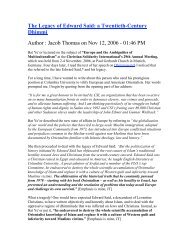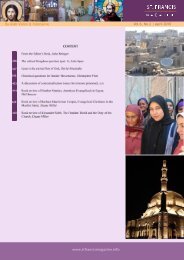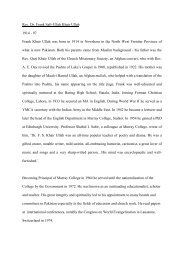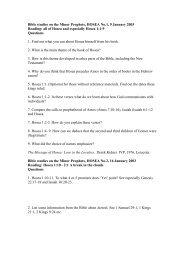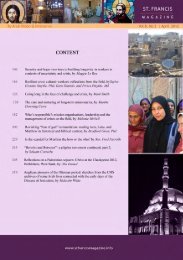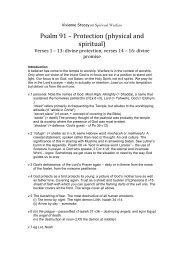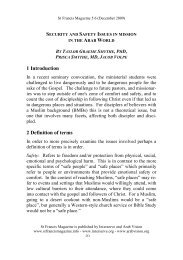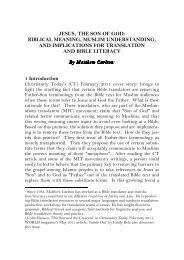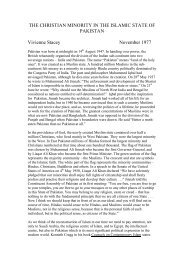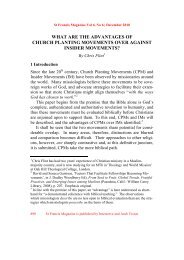download the pdf - St.Francis Magazine
download the pdf - St.Francis Magazine
download the pdf - St.Francis Magazine
Create successful ePaper yourself
Turn your PDF publications into a flip-book with our unique Google optimized e-Paper software.
<strong>St</strong> <strong>Francis</strong> <strong>Magazine</strong> Vol 8, No 4 | August 2012<br />
has focused on conversion <strong>the</strong>ory, 7 but little, if any research has<br />
been committed to understand <strong>the</strong> dynamics and tensions expressed<br />
in <strong>the</strong> nascent Christian community as Iranians seek to live out <strong>the</strong><br />
Christian life. Could it be that discipleship of <strong>the</strong> traditional Western<br />
churches does not address <strong>the</strong> core issues that contribute to <strong>the</strong><br />
conflicts found within Iranian BMB churches<br />
The purpose of this paper is to initially investigate, describe and<br />
explore <strong>the</strong> nature of <strong>the</strong>se conflicts and examine <strong>the</strong> factors that<br />
lead to tensions within <strong>the</strong> nascent Iranian Christian churches.<br />
The research question which will be investigated is: What promotes<br />
disharmony in Iranian churches or fellowships living in <strong>the</strong> Diaspora<br />
Cultural characteristics and values found in Iran and Islamic<br />
societies make up part of <strong>the</strong> context into which <strong>the</strong> new faith is<br />
bir<strong>the</strong>d. Power structures, interpersonal communication, trust, and<br />
conflict resolution will be areas of cultural context that will be examined.<br />
But first, a summary of my methodology will be presented,<br />
and <strong>the</strong>n some historical and political background without which<br />
Iranian Christianity cannot be understood.<br />
2 Research Methodology<br />
This research paper is qualitative field research based upon up to<br />
fifty-one interviews of primarily second wave BMB Iranians. It uses<br />
open-ended questions in guided conversations based on key areas<br />
that explore <strong>the</strong> relationships that led up to disharmony and <strong>the</strong><br />
results of that disharmony. I have applied honor and shame <strong>the</strong>ory,<br />
conflict and resolution <strong>the</strong>ory, based cross-cultural research. The<br />
purpose for using <strong>the</strong>se <strong>the</strong>ories is based on two factors. First, Iran<br />
is not high on <strong>the</strong> individualism-collectivism scale as Middle Eastern<br />
countries (Hofstede 1980). Second, <strong>the</strong>re is little if any<br />
knowledge of fieldwork done on post-conversion life in community<br />
(Miller 2012). Therefore, I sought to let <strong>the</strong> BMBs determine <strong>the</strong><br />
7 For books dealing with conversion see Gaudeul, (1999); Greenlee (2005); Greenlee<br />
and Love (2006); Miller (1969); Woodberry (1998), (2005), (2008).<br />
<strong>St</strong> <strong>Francis</strong> <strong>Magazine</strong> is a publication of Interserve and Arab Vision 400


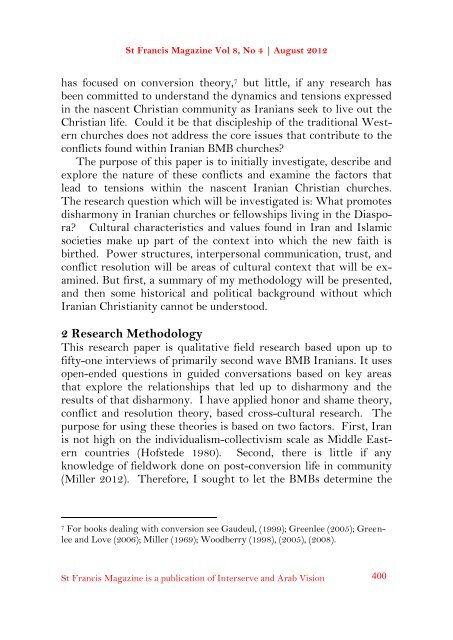

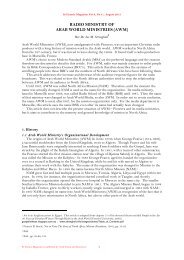
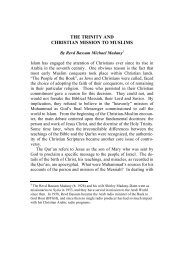
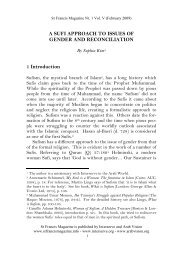
![Reflections on Surah Fatiha and the Lord's Prayer[1] - St.Francis ...](https://img.yumpu.com/49377951/1/184x260/reflections-on-surah-fatiha-and-the-lords-prayer1-stfrancis-.jpg?quality=85)
